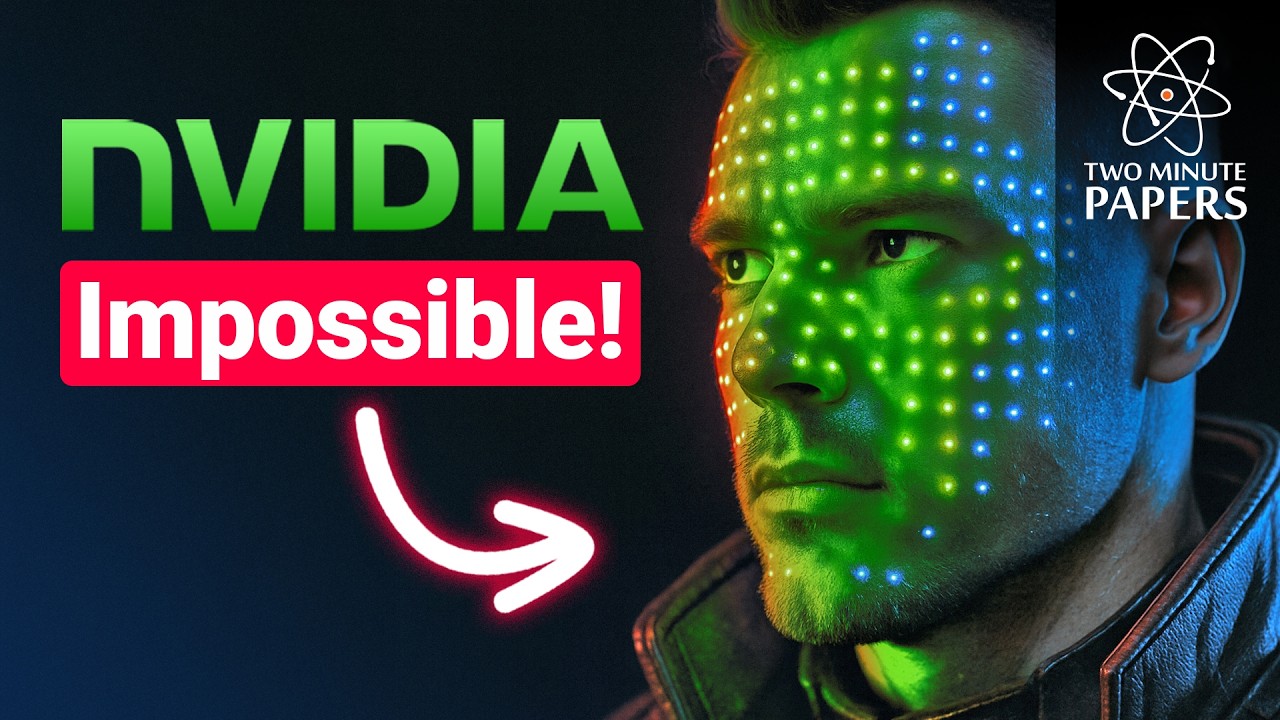The video introduces NVIDIA’s groundbreaking 3D Gaussian Unscented Transform (3DGUT), a technology that combines fast Gaussian splats with real-time ray tracing to achieve high-quality reflections, refractions, and realistic lighting effects instantly. It highlights how this innovation bridges the gap between speed and visual fidelity, enabling more realistic virtual worlds and gaming experiences, with open-source code encouraging further experimentation.
The video begins by explaining the two main methods of creating and rendering virtual worlds: rasterization and ray tracing. Rasterization, used in most computer games, is fast and produces acceptable visuals but lacks high-quality reflections and refractions. Ray tracing, on the other hand, offers stunning visual effects like reflections, refractions, and volumetric caustics, but it is extremely slow, often taking weeks to render complex scenes. The presenter emphasizes the challenge of combining these two techniques efficiently, as they are traditionally considered incompatible due to their differing computational demands.
Next, the video introduces Gaussian Splats, a technique that represents scenes as collections of small Gaussian bumps, allowing for incredibly fast rendering—often faster than real-time. While this method excels in speed, it struggles with rendering mirror-like reflections, refractions, and complex camera models like fisheye lenses. It also consumes significant memory and cannot support advanced camera effects such as rolling shutter, limiting its use for high-fidelity visual effects and realistic simulations. Despite its limitations, Gaussian Splats have significant potential for quick scene visualization but fall short for more detailed rendering needs.
The core innovation discussed is the combination of rasterization and ray tracing techniques into a single system, called 3D Gaussian Unscented Transform (3DGUT). This approach enhances Gaussian Splats by adding secondary rays that bounce within the scene, enabling high-quality reflections, refractions, and realistic lighting effects in real-time. This breakthrough effectively merges the speed of Gaussian Splats with the visual fidelity of ray tracing, making it possible to render complex, realistic virtual worlds instantly. The presenter highlights how this method allows for effects like fisheye cameras and refractive objects, previously thought impossible with Gaussian-based rendering.
The video then compares the new 3DGUT method with previous techniques, showing significant improvements in visual quality and support for complex camera models. Earlier methods struggled with artifacts and distortions, especially with objects close to the camera, but 3DGUT demonstrates a clear advantage in producing cleaner, more accurate images. The source code for this technology is freely available, encouraging viewers to experiment and explore its capabilities. The presenter shares that even with limited training, the system produces impressive results, emphasizing its accessibility and potential for widespread use.
Finally, the video discusses additional advancements like subsurface scattering, which simulates light transport within translucent objects such as skin, marble, or milk. The presenter mentions a simple, compact implementation that can be integrated into engines like Unreal Engine, further enhancing realism. The combination of these techniques—reflections, refractions, translucency, and relighting—signals a new era for virtual worlds and gaming, with realistic visuals achievable in real-time. The presenter concludes by encouraging viewers to consider how they might use these innovations and emphasizes the importance of open research in driving future technological progress.
